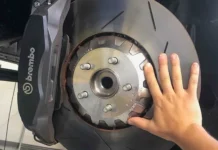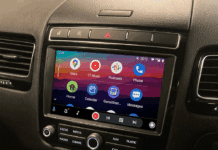SPONSORED CONTENT
Why People Choose to Ship a Car to Another State
People have a multitude of reasons to ship a car to another state instead of doing the driving themselves. Whether you’re relocating for work, selling a vehicle online, or sending a car to a student or relative, using a professional car shipping service can pay off by making the process easier and safer.
Common situations include:
- Moving to a new state and transporting your family’s vehicles
- Buying a car online or at an out-of-state dealership
- Selling a car to an out-of-state buyer
- Seasonal relocations (snowbirds, students, military transfers)
- Shipping classic or luxury vehicles that may not be roadworthy for a lengthy trip and don’t need the mileage on the odometer
- Avoiding wear, tear, and unnecessary travel expenses
Different Ways to Ship a Car Across Country
When you decide to ship a car to another state, most auto transport companies have two principal options to choose from.
1. Open Transport – The most popular and budget-friendly option. Your car is loaded on an open trailer with several other vehicles, much like the car haulers that service dealerships.
2. Enclosed Transport – Offers full protection from weather and debris, recommended for high-value, exotic, or collector cars. Enclosed transport is also recommended for vehicles with very low ground clearance, such as exotics, supercars and lowriders.
You can also choose door-to-door shipping, where the driver picks up and delivers your car as close as possible to your address, or terminal-to-terminal, which can be cheaper if you can have some flexibility with timing.
How Much It Costs to Ship a Car to Another State
The cost to ship a car across country depends on several variables.
Main factors that influence price:
- Distance between pickup and destination
- Type and size of the vehicle
- Open or enclosed carrier
- Seasonality and fuel prices
- Pickup and delivery flexibility
- Whether the car is operable or not
Generally, shorter routes within a few hundred miles may cost a few hundred dollars, while long-distance or cross-country shipping can range higher. The good news is that for longer distances, the cost/mile rate starts to drop.
How Long It Takes to Ship a Car Across Country
The timeline depends mostly on distance and route availability. Local or regional routes may take just a few days, while coast-to-coast transport can take 1–10 days or more.
Transit time can be affected by:
- Weather and traffic
- Driver hours and rest stops
- Delivery coordination and route stops
- Urban vs. rural pickup or drop-off points
- Construction, detours, road conditions
Preparing Your Vehicle for Transport
Before you hand your car to the carrier, a little preparation goes a long way toward a smooth experience.
Checklist before pickup:
- Wash your car and take clear photos from all angles
- Remove personal items and toll tags
- Check tire pressure, fluid levels, and battery
- Inspect your car for fluid leaks: coolant, motor oil, brake, transmission or power steering fluid
- Leave about a quarter tank of fuel
- Disable alarms or immobilizers
- Keep a spare key for the driver
It’s also smart to record the vehicle’s mileage and note any existing scratches or dents on the inspection report.
Choosing a Reliable Auto Transport Company
Not all auto transport companies offer the same reliability or transparency. To make sure your vehicle arrives safely and on time, do a bit of research before booking.
What to look for:
- Proper registration with the DOT (Department of Transportation) and FMCSA (Federal Motor Carrier Safety Administration)
- Proof of active cargo insurance
- Transparent contracts with no hidden fees
- Positive customer reviews and ratings
- Experience handling your specific route or vehicle type
Always request multiple quotes to compare rates and ask detailed questions about pickup windows, delivery options, and insurance coverage.
What to Expect on Pickup and Delivery Day
On pickup day, the driver will inspect your car and document its condition on a form called the bill of lading. You’ll receive a copy for your records. The same inspection happens again upon delivery.
At pickup:
- Review and sign the inspection report
- Provide keys and contact details
- Confirm estimated delivery timeframe
At delivery:
- Inspect your vehicle for any new damage
- Compare with your photos and initial report
- Sign off only after confirming everything is in order – if you detect damage after you’ve signed the Bill of Lading, it could be difficult to file an insurance claim























